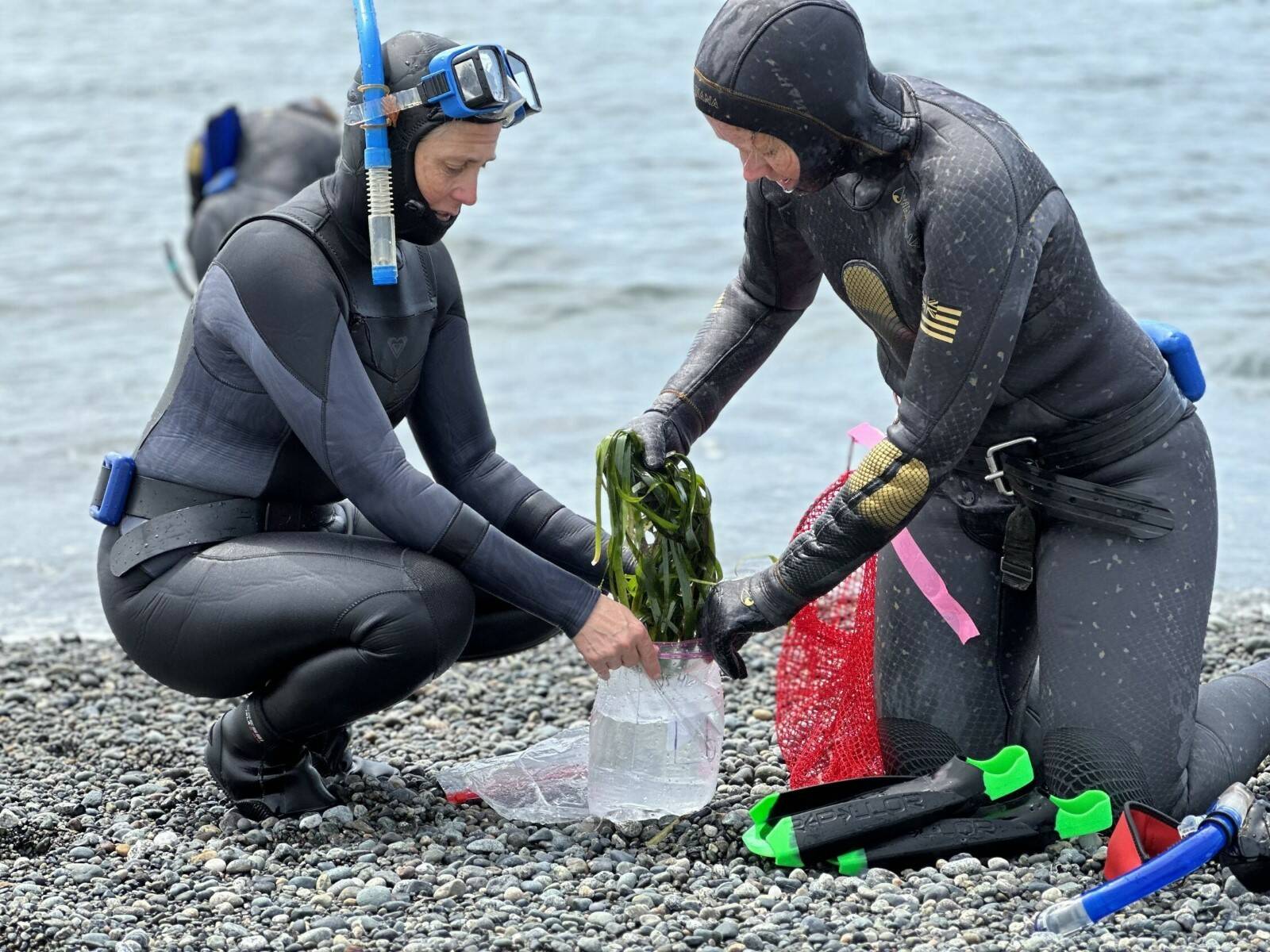Submitted by Friends of the San Juans.
Eelgrass, a flowering plant that grows in shallow marine waters, supports marine food webs including Dungeness crabs, spawning habitat for Pacific herring, and feeding and resting habitat for out-migrating juvenile salmon. Eelgrass also enhances water quality and helps protect shorelines from wave-driven erosion. Eelgrass is even good at storing carbon! Unfortunately, many eelgrass meadows in the San Juans are declining. This summer, Friends of the San Juans began a new multi-year research project examining the health of eelgrass across the county. New research includes detailed surveys of eelgrass depth and distribution at twenty sites, as well as mapping of the deep-water edge of eelgrass beds across the entire county.
Experts from the Washington Department of Natural Resources and Marine Resources Consultants are using underwater videography from the research vessel, Brendan D II, to map eelgrass across the county. You may see them moving methodically across the shallow water this month or next at a shoreline near you!
Information from this project will help researchers answer a very important question: why is eelgrass declining at so many sites in the San Juan Islands? Scientists at Cornell and Friday Harbor Labs have been studying eelgrass wasting disease as one part of this complex puzzle. In collaboration with eelgrass disease experts, Friends of the San Juans’ staff and community science volunteers collected a small number of eelgrass plants through snorkel surveys. Plants from ten sites on San Juan, Orcas, Lopez, Shaw, and Waldron Islands are being analyzed for disease as part of this countywide eelgrass conservation project.
The project is a partnership between Friends of the San Juans, the Washington Department of Natural Resources, and researchers from Cornell University and Friday Harbor Marine Labs. Special thanks to project funders: the Washington State Salmon Recovery Funding Board, the SeaDoc Society, the U.S. Fish and Wildlife Service and Friends of the San Juans’ members. Our appreciation also goes to the landowners who provided shoreline access for the snorkel sampling, and the volunteers who assisted with field surveys and lab processing. Eelgrass mapping results will be compared with 2003 mapping data, providing a valuable understanding of how eelgrass growth, depths, and distribution trends have changed in the San Juans over the past twenty years. Expanded eelgrass wasting disease data applied with the trend data can help us understand why eelgrass is declining, identify resilient eelgrass meadows, and inform future salmon recovery protection efforts in San Juan County and beyond.
For more information visit sanjuans.org or email: friends@sanjuans.org.



